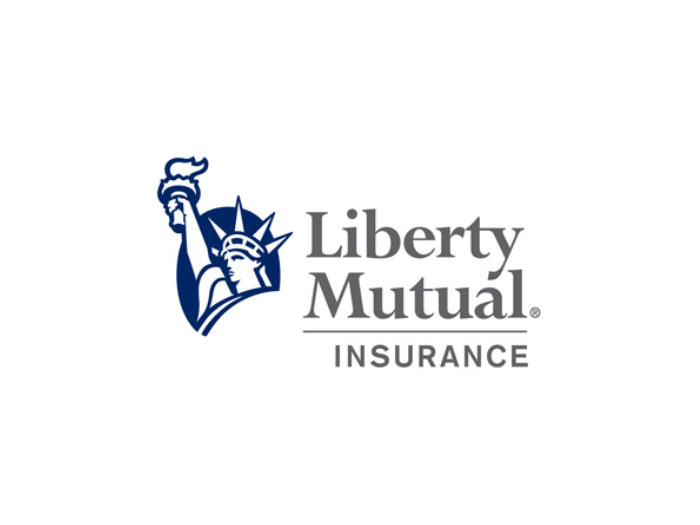Sponsored Content: FM Global
Organizations Can’t Afford to Ignore Climate-Related Risk. Here Are 3 Steps to Implement a Mitigation Strategy

A 2020 survey that queried leaders of some of the world’s biggest businesses on climate-related risk revealed a stark dichotomy between thought and action. Of the 300 CEOs and CFOs surveyed, 76% said their companies are exposed to climate risk, and 86% categorized climate risk management as a medium to high priority.
Despite this awareness, 77% said their organization is not fully prepared for the adverse financial effects of a changing climate, and 82% said they feel they have somewhat to no control over these effects anyway.
Too many CEOs and CFOs are struggling to get a handle on the enormity of climate-related risk. The unpredictability of natural catastrophes and their far-reaching effects may cause many to feel that this is simply too large of a risk to prepare for in any meaningful way.
“The severity of floods, earthquake, extreme winds, and wildfires may be unpredictable, but we’ve seen enough of them to identify some commonalities in the types of damage and downstream effects they cause, which is enough to inform targeted risk mitigation strategies,” said Katherine Klosowski, vice president and manager, natural hazards and structures engineering, FM Global. “These events will keep happening, so it is incumbent upon leaders to be ready for them.”
Shareholders seem to agree.
The Business Case for Climate Risk Management

Katherine Klosowski, Vice President and Manager, Natural Hazards and Structures Engineering, FM Global
In the immediate aftermath of a natural disaster or severe storm, property insurance often will cover the costs of repair and business interruption losses. But it will not reimburse insureds for the opportunities missed and market share lost while they worked to get back on their feet.
“Fast recovery is about more than a return to normalcy; it is critical to keep a foothold in a competitive landscape. Slipping from that foothold can adversely affect a business’s growth and stability years after the storm has passed,” said Eric Jones, global manager, business risk consulting, FM Global.
A recent study by Pentland Analytics found that one year after 71 large publicly traded companies suffered financial loss due to a major flood event, their shareholder value dipped an average 5%. The decreased value was not directly caused by the flood damage itself, but rather reflected investors’ lowered expectations of future cash flow.
Increasingly, investors don’t consider severe weather events as one-off bumps in the road, but as symptoms of bad management.
Business leaders may not have direct control over the changing climate, but they do have control over the way their organization responds to it. Despite the enormity of the task, it’s time for companies to implement risk management strategies designed to withstand the unpredictable.
Here’s how to get started:
1. Assess Your Exposure:

Eric Jones, Global Manager, Business Risk Consulting, FM Global
The first step is to determine how vulnerable each of your organization’s locations is to climate-related financial losses. Flood maps and catastrophe models are a good place to start, but may not be granular enough to paint an accurate picture of exposure.
“Risk engineers can dig into the specifics of each property and the surrounding environment, providing more realistic insights on what types of events could affect your facilities, and how severely,” Klosowski said.
A flood map, for example, may tell you the likelihood of a major flood impacting your location, but it can’t indicate how much water will infiltrate your structure, how fast it will move, or what types of debris or contaminants it may carry.
Look for engineering firms that specialize in your geographic area and/or property type. They should have technical insights that surpass publicly available risk assessment tools.
2. Quantify Potential Losses
Once you’ve determined what types of natural hazards your properties are most exposed to, you can begin running loss scenarios to estimate potential damage to your locations and to any critical suppliers, retailers and other key partners. Establish the timeframe during which normal operations may be disrupted; the long-term impact to revenue and profitability an event may cause; and any extra expenses you may incur to adjust operations.
“This will be a multi-disciplinary effort. Input from finance, operations managers, purchasing and sales departments, and the C-suite can be critical,” Jones said.
This task will be more complicated for organizations with multiple properties spread over several geographic areas, and for those with long, complex supply chains. Assessing financial impact requires analyzing the contribution of every link in that chain.
“This exercise might reveal that you only have one supplier of a small but very important part, thus any damage to that one supplier has an outsize financial impact on your business. Or that you have specialized equipment in one particular flood-exposed location that would be difficult to replace,” Jones said. “Assessing the financial implications allows you to prioritize loss control strategies.”
3. Mitigate the Risk
With a better understanding of exposures and potential loss severity, risk managers can more effectively design targeted mitigation strategies.
Sticking with flood scenarios, those strategies might include simply moving critical equipment to a higher level. Some locations may need better protection from the built environment; landscape engineers can reshape the surrounding topography to redirect flood waters away from your facility.
“If supply chain disruption turned out to be your greatest vulnerability, then the loss mitigation solution may be as simple as securing contracts with backup vendors in alternate locations,” Jones said.
Though risk profiles and risk management strategies may vary from one location to the next, there is a common denominator – establishing and practicing an emergency response and business continuity plans with the aim of ensuring customers experience as little disruption as possible should an unexpected event occur.
“Designate the chain of command, establish protocols to secure the property, check on employees, and maintain communication. Most importantly, run table-top scenarios to practice these plans before the real thing happens,” Jones said.
Tap into Insurer Expertise
Companies that assess, quantify and mitigate climate-related risk remain competitive over the long term.
In a 2019 analysis of 109 companies in the paths of Hurricanes Harvey, Irma and Maria, the entities that proactively took the most measures to protect their properties performed 10% better than peers who had not, in terms of shareholder value.
“This demonstrates not only that climate-related risk management is possible, but that it pays off,” Klosowski said.
In that 2019 study, the successful companies followed all of FM Global’s engineering advice relating to storm protection. As one of the world’s largest commercial property insurers, FM Global is no stranger to the multi-faceted impacts of natural catastrophes.
In addition to hazard maps for flood, earthquake and hail, FM Global also provides property loss prevention data sheets containing the latest engineering guidelines. These resources are backed up by a team of scientists, engineers and technicians from 14 countries of which 50 who hold advanced degrees
“We think of ourselves as much more than a risk transfer provider. Rather, we aim to be experts in the emerging threats facing our clients, and the world at large,” Klosowski said. “When it comes to climate risk, it is never too late to prepare. Climate risk may be inevitable. Resulting property damage is not.”
For more information on how to navigate the complexities of climate risk and help make your business more resilient, visit www.fmglobal.com.
This article was produced by the R&I Brand Studio, a unit of the advertising department of Risk & Insurance, in collaboration with FM Global. The editorial staff of Risk & Insurance had no role in its preparation.










